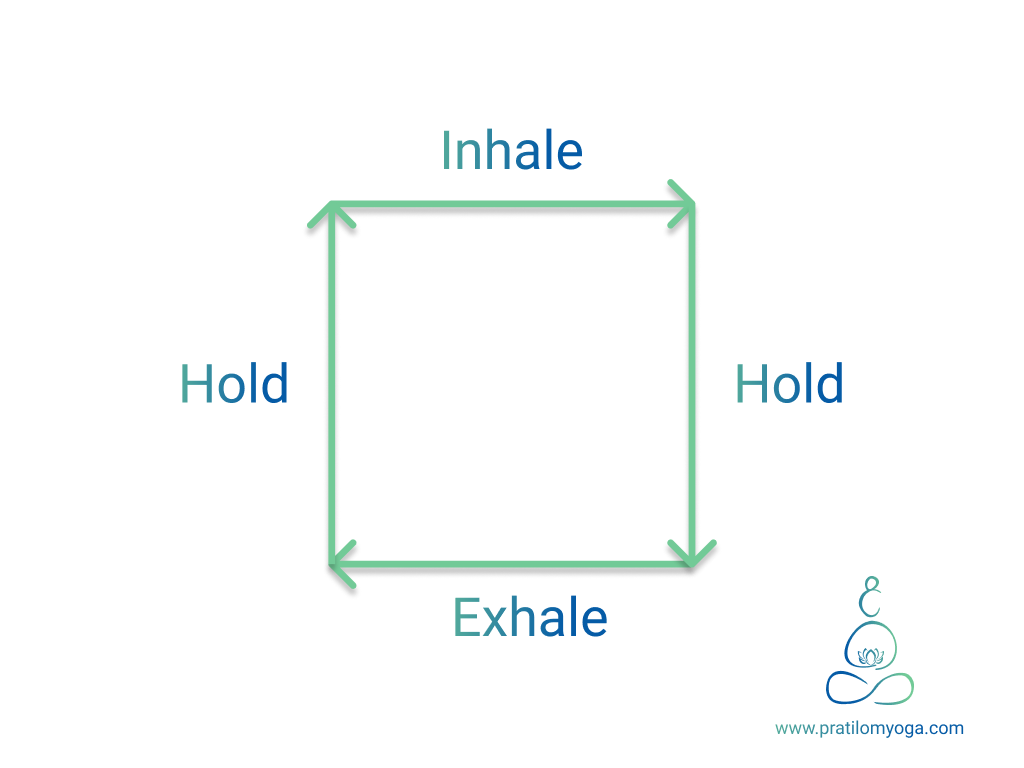This is a very ancient yogic breathing method made popular by Navy SEALs, they call it the tactical breath. I like this breathing method in particular because many other breathing methods could cause hyperventilation. This method doesn’t cause it and is also particularly helpful in such cases.
Please sit at the edge of your chair or sofa such that the soles of your feet and thighs are parallel to the floor with your back as straight as possible and look forward, with a relaxed gaze without focusing on any particular object. Take a few deep breaths, calmly inhale and exhale a few times.
Now, do you observe, what happens when the inhalation stops and the exhalation begins, do you notice a tiny involuntary pause? Now watch closely what happens when the exhalation stops and the inhalation begins? You may notice a tiny involuntary pause here too.
Not just that you can notice that every time we feel fear or stress or anger or when we try too hard to concentrate, we hold our breath, I have seen people holding breath while writing a cheque or an important email or when trying to stand up from sitting position and vice versa. And when shocked or panicking, we are almost gasping for air.
Hence when we hold the breath involuntarily it sends disturbing signals to the vagus nerve and disrupts the whole autonomic nervous system including immunity, cardiac rhythm, sleep, digestion etc. Yogis say that Pause means death. If I inhale and never exhale, what will happen? I am dead. And if I exhale and then I never inhale, then what will happen? I am dead. Death means pause between inhalation and exhalation. So, what we want to do is we want to negate the pause.
But the way we want to do it is by becoming conscious of the pause and stretching the pause just for a little while and so then we can get hold of it and negate it using the circular breathing. It is like stretching the elastic band first and then letting it go so that it resumes its normal length. But our body is alive and conscious so instead of just returning back to normal it will build awareness and resistance against retention.
If you do it forcefully and without following the necessary precautions you can faint. However, if you do it judiciously (following the protocol) you will gradually increase your breathing capacity as well as breath-holding capacity, gently strengthening the cardiovascular system and resistance against daily stress and Anxiety. Enough of the discussion let’s jump in. The method is as follows:
- Inhalation for 4 seconds
- Retaining the breath inside for 4 seconds
- Exhalation for 4 seconds
- Holding the exhalation for 4 (so not breathing, refraining from breathing for 4 seconds)

Hence, when shown in a diagram it creates a square or box and hence the name box breathing or square breathing. Additionally, the holding period allows a little extra time for gas exchange in the lungs but because we are doing it rhythmically and with conscious attention it doesn’t shock the nervous system and doesn’t induce any panic rather improves stress response when practiced daily. Additionally, this breathing will induce heat and warmth on a cold day. Repeat this 30 times and that makes one cycle. You can do up to 3 cycles, you can take a 60 second break between each cycle to allow the breath and heartbeat to be normal.
If this is difficult you can do 2-second inhalation, exhalation and pause. It’s not about being competitive. It’s about building the capacity and strength gradually and safely. You can add a second every week, on the second week you do the same practice but you inhale, retain and exhale for 5 seconds. And slowly increasing the capacity to inhale, retain and exhale for 30 seconds. How do you feel after this practice? Let me know in the comments below. If you really enjoyed this article, share it with your friends and family too. so they can also benefit from box breathing.

